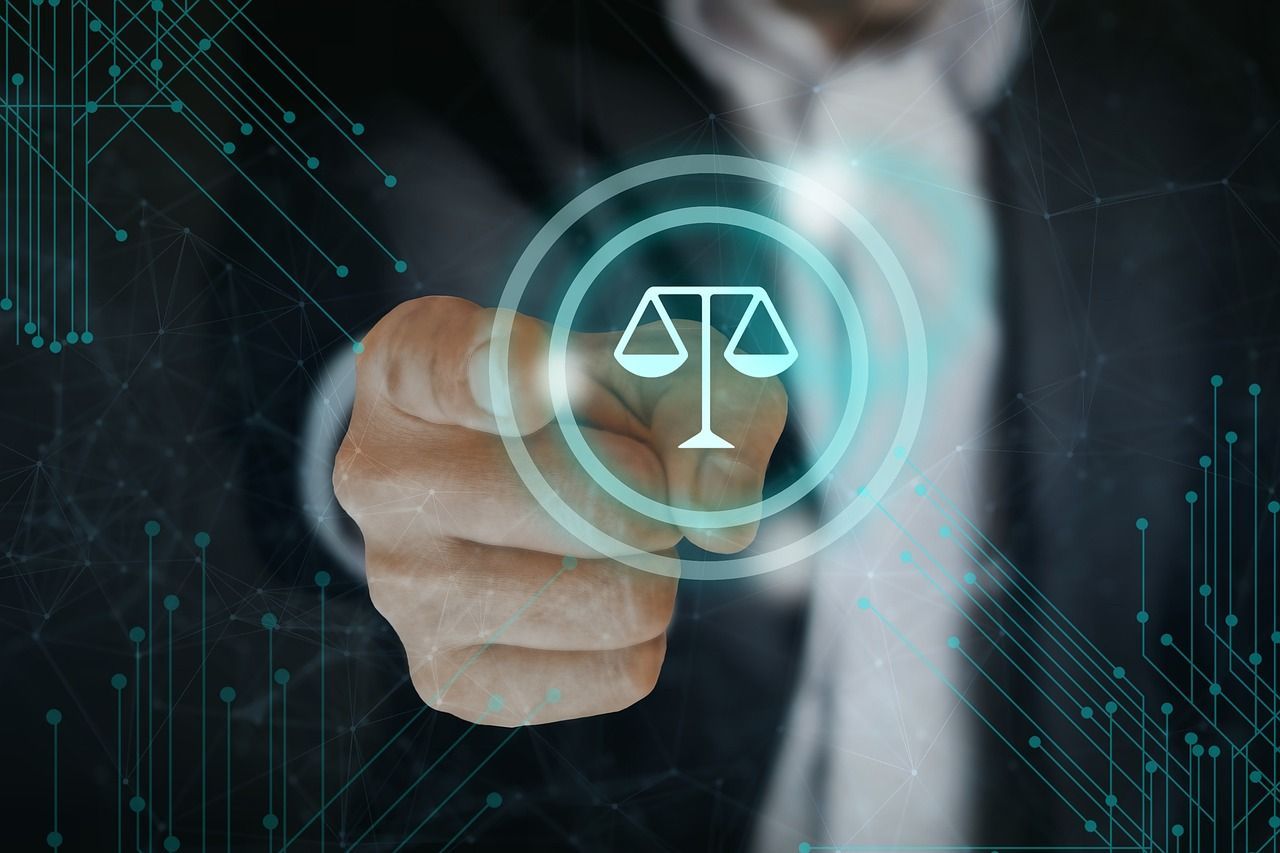Essential Insights on Law and Cyber Security for Today's Professionals
In today’s interconnected world, where digital innovation fuels both opportunity and risk, the integration of law and cybersecurity has emerged as a critical mandate for organizations worldwide. Combining modern legal principles with technical cybersecurity measures creates a formidable defense against evolving threats such as identity theft, data breaches, and noncompliance.
This article provides an in-depth exploration of integrative legal and cybersecurity strategies, actionable risk management practices, and innovative educational pathways that prepare professionals for the challenges and opportunities at the convergence of cyber law and national security law.
In an era defined by rapid digital transformation and increasingly sophisticated cyberattacks, no organization can afford to focus only on technical defenses or legal compliance in isolation. Today, law and cybersecurity must be viewed as two complementary sides of the same coin. This article examines how integrated strategies not only help organizations navigate legal challenges and cybersecurity incidents but also transform these challenges into strategic competitive advantages.
The discussion covers actionable tactics to align legal and technical defenses, explores regulatory frameworks designed to govern digital risk, and highlights educational pathways for those seeking to enter this dual-discipline field. Whether you represent a financial institution, a private corporation, or a government agency, the insights shared here are designed to inform your approach to protecting sensitive data and critical infrastructure.
The Importance of Integrating Law and Cybersecurity
Understanding the Digital Threat Landscape
The digital realm today is marked by unprecedented complexities. Cyberattacks have become more sophisticated and target a wide range of entities—from multinational corporations to local government departments. The consequences of failing to adopt an integrated approach can be severe. For example, when a major retailer suffered a data breach that led to over $30 million in fines, the incident underscored the inherent vulnerabilities in systems that rely solely on either legal frameworks or technical defenses. This case highlights the necessity of a holistic strategy that weaves together the strengths of both realms.
Unified Legal and Cybersecurity Approaches
Integrated defense strategies blend the analytical rigor of legal frameworks with proactive technical measures. The primary objective is to ensure that cyber law, national security law, privacy law, and related legal disciplines work in tandem with cybersecurity practices. In doing so, organizations not only mitigate risks but also shorten remediation times and reduce financial losses. This collaborative approach is reflected in statistics showing that coordinated incident response teams can reduce breach-related losses by up to 20%.
Legal Frameworks, Regulations, and Cybersecurity Laws
Cyber Law and Its Role in Digital Protection
Cyber law is at the forefront of regulating digital conduct in an increasingly connected world. It establishes jurisdictional authority over cyber incidents, helps deter digital crimes, and provides a basis for legal recourse following breaches. By defining and enforcing cybersecurity laws, legislators empower law enforcement agencies and cybersecurity professionals to take decisive action against cybercriminals. This legal foundation is essential for ensuring that private corporations, financial institutions, and government bodies are held accountable for protecting electronic communications and sensitive information.
Privacy and Data Protection Regulations
Privacy law governs the critical aspects of data collection, storage, and usage. With regulations such as the GDPR in Europe and HIPAA in the United States, organizations are required to maintain rigorous data protection standards. These standards are designed to safeguard personally identifiable information and sensitive data from misuse. The implementation of strong privacy and accountability acts means that even minor lapses in data protection can lead to significant penalties and legal challenges. By integrating privacy law with cybersecurity measures, organizations can minimize the risk of data breaches and enhance consumer trust.
National Security and Compliance Standards
National security law plays a vital role in protecting a nation’s critical infrastructure and ensuring compliance with rules set by federal agencies and the national security agency. This area of law intersects with cybersecurity when nations develop policies that not only safeguard military and governmental data but also influence private-sector practices. The enforcement of national security policy, combined with stringent risk assessments, helps minimize vulnerabilities at multiple levels. Federal agencies and intelligence law experts often lead initiatives that align with Homeland Security guidelines, ensuring that both the public and private sectors remain resilient against cyber threats.
Global and Regional Regulatory Frameworks
Organizations operating across borders must contend with a complex mosaic of laws and regulations. Alongside European Union directives and state laws in the United States, companies must also navigate legislation that pertains to cyber law and privacy law in emerging markets. The challenge is to create compliance systems that can adapt to regional nuances while maintaining a standardized approach to data protection and cybersecurity. This often involves coordinating with national associations and regulatory departments to ensure that internal policies meet international standards while addressing unique local security risks.
Risk Management and Incident Response Strategies
Integrating Legal and Technical Risk Assessments
Effective risk management requires a balanced evaluation of both legal and technical vulnerabilities. By conducting comprehensive risk assessments that involve legal research and cybersecurity diagnostics, organizations can pinpoint weaknesses in their systems. Such assessments often reveal gaps not only in technological defenses but also in regulatory compliance and privacy law adherence. Incorporating insights from law firms and in-house counsel alongside the expertise of cybersecurity professionals creates a robust framework for risk mitigation.
Developing Dual-Purpose Incident Response Plans
Incident response plans are most effective when they integrate both immediate technical remediation and long-term legal compliance strategies. A well-structured response plan should cover the identification of cybersecurity incidents, rapid containment measures, and timely disclosure to law enforcement agencies and regulatory bodies. A notable instance of this dual-purpose approach was seen in a banking institution that reduced its incident response time by 25% during a ransomware attack by involving both legal advisors and IT experts. This not only reduced the overall damage but also ensured that the institution complied with national security policy and privacy law regulations.
Continuous Training and Crisis Drills
The dynamic nature of cyber threats necessitates ongoing training and simulation exercises. Regularly scheduling drills that simulate potential cyberattacks can help both legal and cybersecurity teams stay prepared. Through cross-training sessions that cover legal challenges, digital forensics, cybersecurity laws, and intelligence law, organizations foster a culture of readiness. These exercises provide law enforcement agencies, in-house counsel, and cybersecurity professionals with the tools to anticipate and swiftly respond to incidents, thereby avoiding delays in emergency incident response.
Coordinated Communication During a Crisis
When an incident occurs, time is of the essence in managing both the technical and legal fallout. Effective crisis communication protocols ensure that all stakeholders, including federal agencies and cybersecurity lawyers, are informed and can contribute to a coordinated response. This collaboration is crucial in maintaining transparency with regulators and minimizing risks related to electronic communications and data disclosure. A clear chain of command, supported by regular policy reviews and legal audits, further reinforces an organization’s defense against cybersecurity incidents.
Practical Measures and Tactical Implementation
Legal Audits and Policy Reviews
Regular legal audits are a cornerstone for maintaining compliance with cyber law and national security law. These audits involve thorough reviews of internal policies, documentation, and operational protocols to ensure that they align with evolving regulations and cybersecurity laws. By collaborating with law firms and legal research departments, organizations can preemptively address issues related to privacy law and intellectual property protection. These reviews not only ensure that the organization meets compliance standards but also serve as a proactive measure to avoid legal challenges.
Implementing Layered Cybersecurity Solutions
No single defense mechanism is sufficient to protect against the multifaceted nature of cyber threats. A layered approach—combining firewalls, intrusion detection systems, encryption, and advanced risk management tools—helps create multiple lines of defense. When these technical measures are reinforced by legal oversight, the overall security posture of the organization is significantly enhanced. This strategy is particularly effective for financial institutions and private corporations that face constant threats such as identity theft and data breaches, ensuring the protection of both electronic records and sensitive information.
Incident Command Structures and Real-Time Collaboration
Establishing an incident command structure that integrates law and cybersecurity expertise is vital for managing crises. Such a structure ensures that legal, technical, and management teams are aligned during an incident. By setting up a dedicated operations center and leveraging advanced data protection tools, organizations can quickly coordinate responses among https://www.jalallaw.com/ law enforcement agencies, and regulatory departments. This coordinated approach helps streamline actions, reduce downtime, and minimize legal repercussions resulting from information security breaches.
Simulation Exercises and Preparedness Drills
Simulation exercises that mimic real-life cybersecurity incidents allow organizations to test their integrated defenses in a controlled environment. During these drills, participants such as cybersecurity professionals, in-house counsel, and external legal consultants work together to identify vulnerabilities and improve incident response mechanisms. The lessons learned from such exercises lead to improved policies, better legal safeguards, and a more agile response framework. This proactive stance prepares companies for a range of unforeseen challenges, whether they stem from targeted data breaches, unauthorized electronic communications, or other security risks.
Preparing for Future Trends and Evolving Threats
Adapting to Emerging Technologies
As technologies such as artificial intelligence, quantum computing, and the Internet of Things (IoT) continue to evolve, so too do the threats associated with them. The rapid pace of technological advancement requires legal and cybersecurity teams to remain agile and ready to adapt. Leveraging adaptive security architectures and innovative technological solutions, organizations can preemptively respond to potential vulnerabilities. This proactive approach not only safeguards against current risks but also prepares organizations for threats that have yet to emerge.
Proactive Policy Formation and Legislative Updates
Future-proofing an organization’s cybersecurity defenses involves proactive policy formation. Collaboration with lawmakers, industry experts, and regulatory bodies is critical for drafting forward-thinking legislation that addresses emerging digital risks. Incorporating elements of privacy act, accountability act, and other legislative measures into internal policies ensures that organizations stay ahead of regulatory changes. This dynamic approach to legal research and policy formulation is essential for maintaining compliance and protecting intellectual property in a fast-changing technological landscape.
Cross-Industry Collaborations and Information Sharing
In today’s globalized economy, sharing knowledge and best practices is key to achieving a robust defense against cyber threats. Cross-industry collaborations involving national security agencies, federal agencies, and even international organizations such as the European Union help in developing common frameworks for cybersecurity. These partnerships foster an environment where information is readily disclosed and collaborative risk assessments are performed. As a result, organizations are better positioned to respond to cybersecurity incidents and maintain a strong commitment to data protection.
Assessing and Mitigating Forward-Looking Security Risks
Anticipating future hazards requires comprehensive, ongoing risk assessments. By combining advanced technical risk management tools with the insights of legal professionals and risk assessment experts, organizations can identify potential vulnerabilities before they escalate into crises. This ongoing effort to assess security risks, manage information security, and protect electronically stored data is fundamental for staying resilient in the face of rapidly advancing technology and evolving cyber threats.
Regulatory and Compliance Best Practices
Implementing National Security Policy and Guidelines
Integrating law and cybersecurity means closely aligning with national security policy and guidelines. Organizations must develop internal policies that mirror the security priorities outlined by Homeland Security and the National Security Agency. Regular updates and legal audits ensure that procedures comply with state laws and international obligations. This strategic alignment not only reinforces compliance but also builds a fortified framework designed to safeguard sensitive information from both cyber and legal vulnerabilities.
Aligning with International Standards and European Union Regulations
In an increasingly interconnected world, compliance with international standards is indispensable. Companies that operate on a global scale must navigate the complexities of European Union directives, GDPR, and other regional cybersecurity laws. Aligning internal practices with these regulations guarantees that electronic records and personally identifiable information are handled per stringent standards. By cooperating with international regulatory bodies and participating in global cybersecurity research initiatives, organizations can build a strong foundation for data privacy and regulatory compliance.
Strengthening Accountability and Legal Oversight
Effective regulatory oversight requires a balance between legal vigilance and technical acumen. Organizations are encouraged to establish rigorous internal review processes that involve both legal and cybersecurity experts. Through regular policy reviews, external audits, and collaboration with law enforcement agencies, companies ensure a high level of accountability. Strengthening legal oversight—including adherence to privacy law, the accountability act, and intellectual property guidelines—underscores the organization’s commitment to comprehensive protection, thereby mitigating risks associated with disclosure and data breaches.
Building a Strong Foundation for Legal and Cybersecurity Governance
Creating sustainable security strategies involves developing a governance structure that supports continuous adaptation and improvement. This structure should incorporate insights from law students, cybersecurity professionals, and executive leadership to ensure that both legal frameworks and technical countermeasures are robust and future-ready. By fostering a culture of transparency, continuous professional development, and strict adherence to cyber law and national security law, organizations lay the groundwork for long-term resilience.
Risk Assessment and Data Protection Strategies
Managing Security Risks and Data Breaches
The cornerstone of any effective cybersecurity strategy is a proactive approach to risk management. Regular risk assessments uncover vulnerabilities that could potentially lead to data breaches. By integrating rigorous technical diagnostics with legal research into cybersecurity laws and privacy law requirements, organizations can develop targeted strategies to manage security risks. Implementing layered security solutions minimizes the likelihood of breaches and helps in preserving sensitive electronic records.
Handling Personally Identifiable Information and Cybersecurity Incidents
Protecting personally identifiable information is not only a regulatory mandate but also a critical component of corporate reputation. Organizations must ensure that data protection measures are in place to guard against unauthorized access and disclosure. Coordinated efforts between cyber law experts and in-house counsel are pivotal when responding to cybersecurity incidents. Such collaborations help guarantee that all aspects—from incident response to subsequent legal reporting—are handled with the utmost precision and in compliance with legal standards.
Enhancing Data Protection Measures
A multi-faceted strategy for data protection is essential for mitigating risks associated with electronic records and sensitive information. This involves deploying advanced encryption, continuous monitoring systems, and regular system audits. By reinforcing these technical measures with robust legal frameworks and compliance with cybersecurity laws, organizations can ensure that data privacy is maintained even in the face of sophisticated cyberattacks. In addition, ongoing legal audits and alignment with state laws and regulations provide further assurances to customers and stakeholders.
Collaborative Measures for Incident Response and Recovery
After a cybersecurity incident, swift recovery is paramount. Coordinated incident response plans that integrate law enforcement agencies, cybersecurity professionals, and legal advisors help mitigate the aftermath of data breaches. These joint efforts ensure that remediation steps are taken promptly, reducing both financial and reputational risks. Furthermore, maintaining open lines of communication with national security agencies and regulatory departments fosters a culture of accountability and continuous improvement in risk management protocols.
Conclusion
The integration of law and cybersecurity is no longer an optional strategy—it is a necessity for organizations operating in today’s complex digital landscape. By aligning legal frameworks such as cyber law, privacy law, and national security law with robust technical measures, businesses can create unified defenses that not only reduce risks but also enhance their resilience against identity theft, data breaches, and compliance pitfalls. Through regular legal audits, layered cybersecurity solutions, and coordinated incident response plans, organizations transform legal challenges into strategic competitive advantages.
Looking forward, the demand for professionals who understand the intricate balance between law and cybersecurity will only increase. Advances in technology, the advent of artificial intelligence, and the proliferation of IoT devices will continue to reshape the threat landscape. In response, organizations must invest in dual degree programs, advanced certifications, and continuous professional development to bridge the skills gap. Innovative legal research, proactive policy formation, and international regulatory alignment will become essential components of a comprehensive cyber defense strategy.
Together, through continuous improvement, education, and strategic collaboration, the intricate fields of law and cybersecurity can be merged to create a robust, resilient, and dynamic defense system that protects not only data and infrastructure but also the very foundation of our modern society. Embrace the integration, drive innovation, and secure your future in the digital age. Contact Jalal Abdallah PLLC today.











